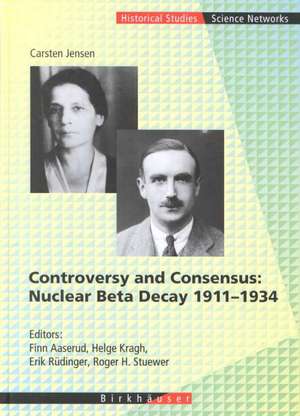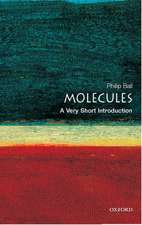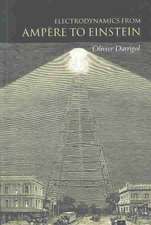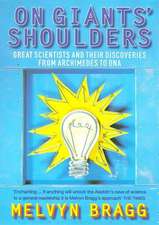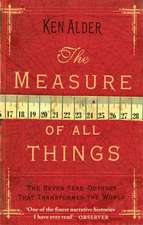Controversy and Consensus: Nuclear Beta Decay 1911–1934: Science Networks. Historical Studies, cartea 24
Autor Carsten Jensen Editat de Finn Aaserud, Helge Kragh, Erik Rüdinger, Roger H. Stueweren Limba Engleză Hardback – dec 1999
| Toate formatele și edițiile | Preț | Express |
|---|---|---|
| Paperback (1) | 384.86 lei 6-8 săpt. | |
| Birkhäuser Basel – 29 oct 2012 | 384.86 lei 6-8 săpt. | |
| Hardback (1) | 395.25 lei 6-8 săpt. | |
| Birkhäuser Basel – dec 1999 | 395.25 lei 6-8 săpt. |
Din seria Science Networks. Historical Studies
- 18%
 Preț: 796.31 lei
Preț: 796.31 lei - 15%
 Preț: 652.49 lei
Preț: 652.49 lei - 18%
 Preț: 787.15 lei
Preț: 787.15 lei -
 Preț: 385.25 lei
Preț: 385.25 lei -
 Preț: 489.30 lei
Preț: 489.30 lei - 15%
 Preț: 476.75 lei
Preț: 476.75 lei -
 Preț: 389.31 lei
Preț: 389.31 lei - 15%
 Preț: 699.59 lei
Preț: 699.59 lei - 15%
 Preț: 660.37 lei
Preț: 660.37 lei - 15%
 Preț: 531.59 lei
Preț: 531.59 lei - 24%
 Preț: 909.27 lei
Preț: 909.27 lei -
 Preț: 396.24 lei
Preț: 396.24 lei - 18%
 Preț: 903.17 lei
Preț: 903.17 lei -
 Preț: 382.36 lei
Preț: 382.36 lei - 15%
 Preț: 647.73 lei
Preț: 647.73 lei - 15%
 Preț: 702.87 lei
Preț: 702.87 lei - 15%
 Preț: 674.74 lei
Preț: 674.74 lei - 15%
 Preț: 655.60 lei
Preț: 655.60 lei - 15%
 Preț: 650.19 lei
Preț: 650.19 lei - 15%
 Preț: 644.82 lei
Preț: 644.82 lei - 15%
 Preț: 646.62 lei
Preț: 646.62 lei - 18%
 Preț: 1119.08 lei
Preț: 1119.08 lei - 18%
 Preț: 1135.46 lei
Preț: 1135.46 lei - 20%
 Preț: 595.48 lei
Preț: 595.48 lei - 20%
 Preț: 596.59 lei
Preț: 596.59 lei - 15%
 Preț: 649.06 lei
Preț: 649.06 lei - 20%
 Preț: 567.63 lei
Preț: 567.63 lei - 15%
 Preț: 639.37 lei
Preț: 639.37 lei -
 Preț: 399.12 lei
Preț: 399.12 lei - 18%
 Preț: 1390.11 lei
Preț: 1390.11 lei -
 Preț: 361.03 lei
Preț: 361.03 lei - 18%
 Preț: 1395.63 lei
Preț: 1395.63 lei - 15%
 Preț: 642.36 lei
Preț: 642.36 lei - 15%
 Preț: 648.24 lei
Preț: 648.24 lei - 15%
 Preț: 649.06 lei
Preț: 649.06 lei -
 Preț: 392.37 lei
Preț: 392.37 lei
Preț: 395.25 lei
Nou
Puncte Express: 593
Preț estimativ în valută:
75.63€ • 80.88$ • 63.06£
75.63€ • 80.88$ • 63.06£
Carte tipărită la comandă
Livrare economică 18 aprilie-02 mai
Preluare comenzi: 021 569.72.76
Specificații
ISBN-13: 9783764353131
ISBN-10: 3764353139
Pagini: 244
Ilustrații: XVII, 217 p.
Dimensiuni: 155 x 235 x 19 mm
Greutate: 0.59 kg
Ediția:2000
Editura: Birkhäuser Basel
Colecția Birkhäuser
Seria Science Networks. Historical Studies
Locul publicării:Basel, Switzerland
ISBN-10: 3764353139
Pagini: 244
Ilustrații: XVII, 217 p.
Dimensiuni: 155 x 235 x 19 mm
Greutate: 0.59 kg
Ediția:2000
Editura: Birkhäuser Basel
Colecția Birkhäuser
Seria Science Networks. Historical Studies
Locul publicării:Basel, Switzerland
Public țintă
ResearchCuprins
1 Prelude: Beta-Spectrum Research in the Pre-Nuclear Years, 1900–1911.- 1.1 Discovery and identification of the beta particle.- 1.2 The first experiments on the velocity distribution of beta particles.- 1.3 Absorption measurements question the inhomogeneity of the beta particles.- 1.4 The Hahn-Meitner vs. Wilson controversy.- 1.5 From unity to complexity: magnetic-deflection experiments, 1910–1911.- 2 The Origin of Beta Rays, and the Growing Complexity of Their Spectrum: The Rutherford Era, 1911–1919.- 2.1 Introduction.- 2.2 Rutherford’s 1912 theory, and reactions to it.- 2.3 The beta particle as a nuclear constituent.- 2.4 An extreme complexity of beta line-spectra is brought to light: deflection experiments in the years 1911–1913.- 2.5 Continuity as well as lines: The composite beta spectrum.- 2.6 Rutherford’s 1914 theory.- 2.7 The Bohr-Sommerfeld quantum conditions and the beta line-spectrum.- 2.8 Rutherford and the gamma rays.- 3 The Rise of a Controversy: Ellis, Meitner and Smekal Advance Different Beta-Spectrum Theories, 1920–1922.- 3.1 Introduction.- 3.2 Internal conversion, nuclear levels, and Ellis’s interpretation of the beta line-spectrum.- 3.3 Analogy between alpha and beta emission, and Meitner’s interpretation of the beta line-spectrum.- 3.4 Ellis’s response to Meitner’s hypothesis, and his interpretation of the continuous beta spectrum.- 3.5 Meitner replies to Ellis, and reveals her view on the continuous beta spectrum.- 3.6 The atom as a unity: Smekal joins the discussion, and is met with a sharp reaction.- 3.7 Two repetitions of the Chadwick experiment lead to contradictory conclusions.- 4 Secondary Effects and Order of Emission: Two Main Questions in the Controversy, 1923–1925.- 4.1 Introduction.- 4.2 Meitner investigates thebeta spectrum of UX1 and takes it as further support for her view.- 4.3 Radiationless transitions: Rosseland suggests an explanation of the emission of primary, and some secondary, beta particles.- 4.4 The nuclear field and the Compton effect: Two possible reasons for the continuous beta spectrum.- 4.5 Ellis and Skinner reinvestigate the beta line-spectra of RaB and C, and serious problems arise.- 4.6 Beta first, gamma second, or is it the other way around?.- 5 The End of the Beginning: The Controversy Enters the Decisive Phase, 1925–1929.- 5.1 Introduction.- 5.2 Ellis adjusts his view on the emission process, but maintains his interpretation of the continuous spectrum.- 5.3 The number of emitted beta particles.- 5.4 Ellis and Wooster’s tour de force: A determination of the heating effect of RaE.- 5.5 Continental reactions to Ellis and Wooster’s experiment.- 5.6 Some concluding remarks about the controversy.- 6 From Anomaly to Explanation: The Continuous Beta Spectrum, 1929–1934.- 6.1 Introduction.- 6.2 Non-conservation of energy or a new particle? The first phase of the Bohr-Pauli dispute, 1929–1932.- 6.3 Other attempts at explaining the anomalous continuity.- 6.4 The question of upper limits in beta spectra, and the thorium C branching problem.- 6.5 The impact of the miraculous year: The second phase of the Bohr-Pauli dispute, 1932–1933.- 6.6 The two theories of beta decay.- 7 Towards a Theory of Internal Conversion: The Beta Line-Spectrum, 1927–1934.- 7.1 Introduction.- 7.2 Experimental evidence brings about a new view on the origin of gamma rays.- 7.3 The radiation hypothesis proves insufficient to explain internal conversion of gamma rays.- 7.4 A theory of internal conversion is developed.- Summary and Conclusion.- Name Index.
Recenzii
"Jensen’s book helps lay the foundations of a new and comprehensive history of nuclear science." (Centaurus)
